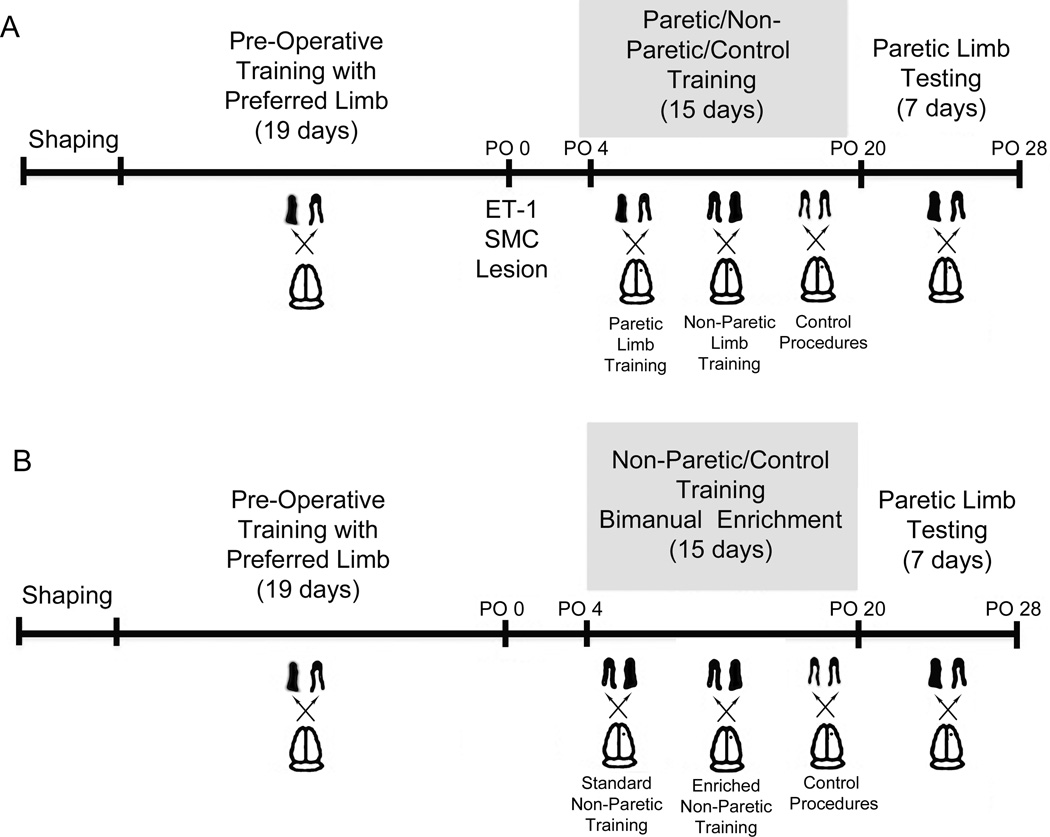Fig. 1.
Experimental Design. In Experiment 1 (A), mice were given ET-1 induced ischemic lesions of the contralateral SMC following task acquisition. During postoperative training, mice trained with either the paretic (Par) or non-paretic (NonPar) limb on a reaching task or received control procedures. Following training, all mice were assessed on the Pasta Matrix Reaching Test using their paretic limb. Experiment 2 (B) was similar to Experiment 1. However, during post-operative training all mice were forced to use their non-paretic limb for reaching or received control procedures. In addition, half of the mice were given home cage enrichment that encouraged bimanual dexterous forelimb use (BE) versus standard housing conditioning (ST).

